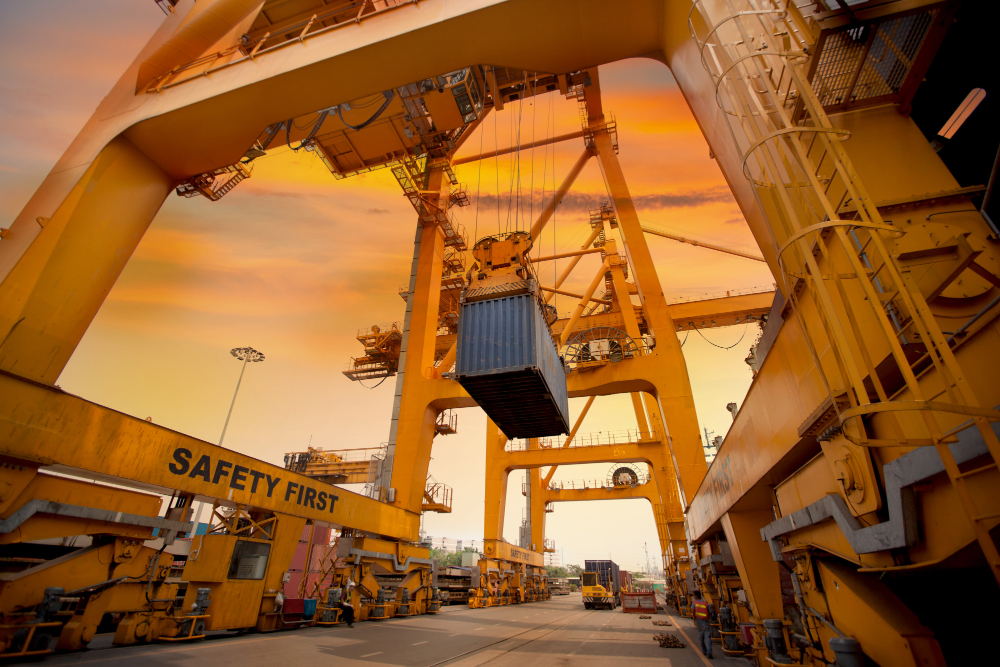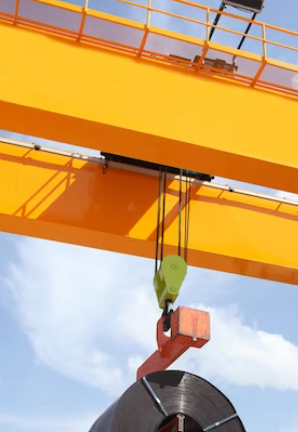Safety Tips For Overhead Cranes
Overhead cranes have been mainly utilised in lifting cargo safely while efficiently transporting different loads within facilities, helping workers carry out their tasks more effectively while decreasing productivity losses and workplace injuries.
An overhead crane comprises of a hoist, trolley and bridge system. The hoist travels along the bottom flange of the single girder bridge beam with runway/end trucks attached at either end to move along its course.
Versatility
Overhead cranes can be found across many industries and applications. Used for lifting and transporting cargo and equipment, overhead cranes save time and effort while decreasing worker injury risks. Furthermore, their flexibility means they can quickly adjust to the specific requirements of any facility or application.
At shipping and loading docks, overhead cranes are widely utilised to lift and transport containers, as well as to move cargo around a warehouse efficiently and increase productivity. Cranes also play an integral role in manufacturing as they help efficiently move large amounts of raw materials and finished products around a factory floor. In construction applications, they may be used to handle bulky supplies like precast panels, concrete blocks, steel beams and other building components easily from one area to the next – especially important at power plants and steel mills where large machinery requires transportation from one place to the other – an indispensable feature used by these tools in power plants and steel mills where heavy machinery, engines or large equipment from one place to another – essential tools indeed!
Overhead cranes can work 2-3 times faster than teams of workers or tow motors and are far more efficient than forklifts. Furthermore, their greater precision reduces misplaced goods and accidents; plus, explosion-proof models make them suitable for facilities handling explosive or flammable material.
Efficiency
Overhead cranes are an integral component of efficient manufacturing operations, moving large materials between storage areas and assembly lines, loading products onto trucks or planes for shipping, or helping warehouse staff position bulky equipment or supplies on shelving or racks for storage.
An overhead crane offers an effective alternative to forklifts, which often struggle to move heavy loads without a stable foundation by not needing floor space to operate from. Instead, these overhead cranes utilise precise controls that ensure objects are placed appropriately without the risk of stacking or dropping items due to human error.
An overhead crane uses a motor, reducer, drum and set of pulleys to lift and lower a load. Depending on your environment, this mechanism could be powered by either hydraulic drive or servo motor drive and connected via trolley to hoist, which is connected via chain or wire rope supporting its load.
For efficient and safe operations, always use tag lines to indicate where a crane’s load lies. If lifting high enough to clear obstacles, ensure the load rises gradually over one smooth movement without abrupt moves, which could cause it to drift sideways and potentially damage your crane.
Safety

Cranes are powerful machinery that require significant training and safety knowledge for optimal use. Equipment accidents may result in serious injuries, lost work time and costly repairs – in addition to damaging company’s reputation and decreasing productivity and uptime. By following some essential safety tips, companies using overhead cranes can reduce their risk of accidents.
Unsecured loads or slings that hold them are one of the leading causes of crane accidents. If an object that weighs thousands isn’t secured appropriately, it could come crashing down onto workers below and cause injury or worse.
Operating near power lines can present another significant hazard for operators, with potential electrocution occurring immediately if their crane boom touches one of these powerlines. To avoid this possibility, always exercise extreme caution around these powerlines, using cranes with non-conductive remote control systems only and only operating cranes when working near them.
Safety for overhead crane operations lies with all who come into contact with it, including operators, riggers and other workers. Designated “no-fly zones” must also be created with constant surveillance of its movement and position. Columbus McKinnon can create safety systems tailored specifically for your facility using motion control products like sensors, radio remote controls and limit switches that will program your crane to slow or stop automatically in specific locations. Please get in touch with us now so we can install customised safety solutions!
Maintenance
Overhead cranes require regular inspections to ensure that they operate at optimal capacity, safeguarding workers from injury while decreasing the chance of equipment breakdown that can cost expensive repairs and reduce productivity.
An area check involves a crane operator conducting a walkaround of their crane to identify signs of physical damage and any issues that have emerged since the last inspection. They then review power sources such as plug-in cables and pendant pushbutton station plug-ins. Finally, the operator ensures the hoist chain remains undamaged, wire ropes do not have fray marks, and all travel limit switches work correctly.
Crane operators should listen out for any unusual noises or clunks, as these could indicate wear and tear on parts or incorrect loading of loads. If this issue arises, the use of the crane should be suspended until an experienced electrician or crane service professional has examined it.
Overhead cranes contain numerous components that may wear down over time, and regular inspections are the key to spotting any issues early. A worn-out end truck wheel could lead to misalignment and increased stress on runway beams and motor, necessitating its replacement as soon as possible in order to avoid potential issues. In addition, excessive wear on brake friction discs is an indicator that they may quickly reach the end of their useful lives and should be changed out promptly.
